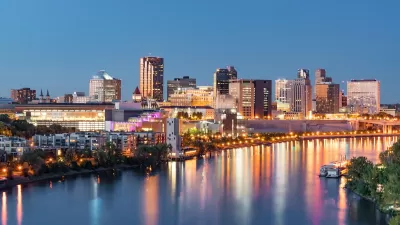A common criticism of streetcars are their relative slow speed combined with high capital and operating costs. Still, streetcars are being constructed in both large in small cities to help incentivize development.
Streetcars run at street-level, therefore, running directly along with the flow of traffic, and even stopping at stoplights. As Mary Newsom of The Naked City describes, many critics of streetcars "seem to be assessing the streetcar's value by whether it's faster than driving...," and as in one Charlotte Observal editorial writes, the streetcar "would operate on regular streets, stopping for red lights and traffic congestion. It wouldn't be faster than a bus. It would merely be a very expensive, but very pretty, bus. What the city is buying is an aesthetic."
Instead, as Newsom argues, is the true success of the streetcar, and why so many cities, big and small, around the U.S. are building high-priced, short-length routes; the streetcar provides a powerful incentive to development. She argues, "lost in that analysis, and in remarks by some that a streetcar is just a toy, is this: Development reacts to streetcars very differently from the way it reacts to bus routes." So even while the streetcar may not effectively increase speeds for those who switch to it over driving or using the bus, the gains from new development outweigh the transportation issues the streetcar fails to solve.
But yet, is it still worth it? Newsom cites, indeed, the millions of dollars cities and counties spend in other development incentives, such as building sports stadiums. What types of investments, as well as what kinds of funding mechanisms for such large projects, will certainly need to be the source for more research in the future.
FULL STORY: Is a streetcar speedy? And other red herrings

Alabama: Trump Terminates Settlements for Black Communities Harmed By Raw Sewage
Trump deemed the landmark civil rights agreement “illegal DEI and environmental justice policy.”

Planetizen Federal Action Tracker
A weekly monitor of how Trump’s orders and actions are impacting planners and planning in America.

The 120 Year Old Tiny Home Villages That Sheltered San Francisco’s Earthquake Refugees
More than a century ago, San Francisco mobilized to house thousands of residents displaced by the 1906 earthquake. Could their strategy offer a model for the present?

Indy Neighborhood Group Builds Temporary Multi-Use Path
Community members, aided in part by funding from the city, repurposed a vehicle lane to create a protected bike and pedestrian path for the summer season.

Congestion Pricing Drops Holland Tunnel Delays by 65 Percent
New York City’s contentious tolling program has yielded improved traffic and roughly $100 million in revenue for the MTA.

In Both Crashes and Crime, Public Transportation is Far Safer than Driving
Contrary to popular assumptions, public transportation has far lower crash and crime rates than automobile travel. For safer communities, improve and encourage transit travel.
Urban Design for Planners 1: Software Tools
This six-course series explores essential urban design concepts using open source software and equips planners with the tools they need to participate fully in the urban design process.
Planning for Universal Design
Learn the tools for implementing Universal Design in planning regulations.
Clanton & Associates, Inc.
Jessamine County Fiscal Court
Institute for Housing and Urban Development Studies (IHS)
City of Grandview
Harvard GSD Executive Education
Toledo-Lucas County Plan Commissions
Salt Lake City
NYU Wagner Graduate School of Public Service





























